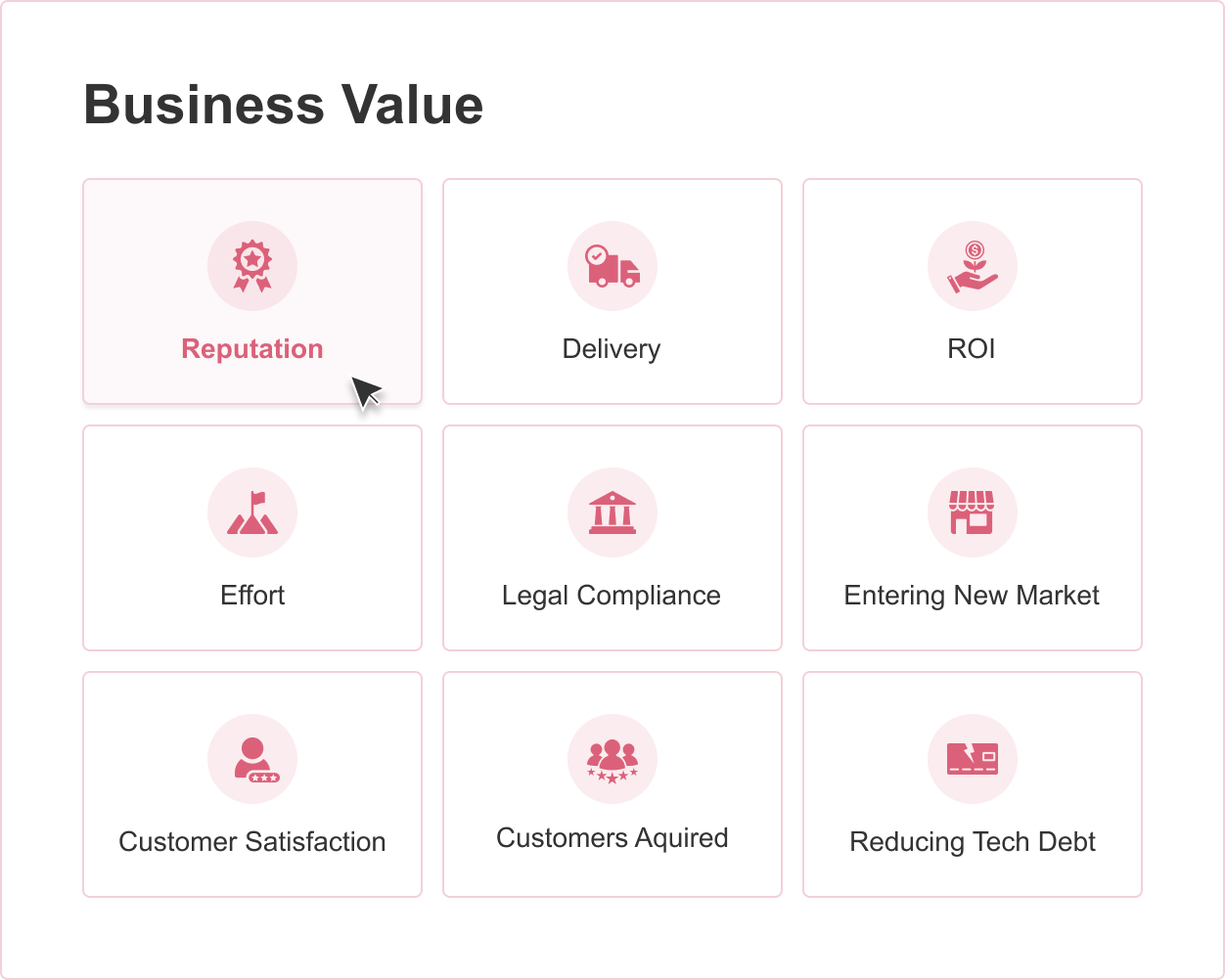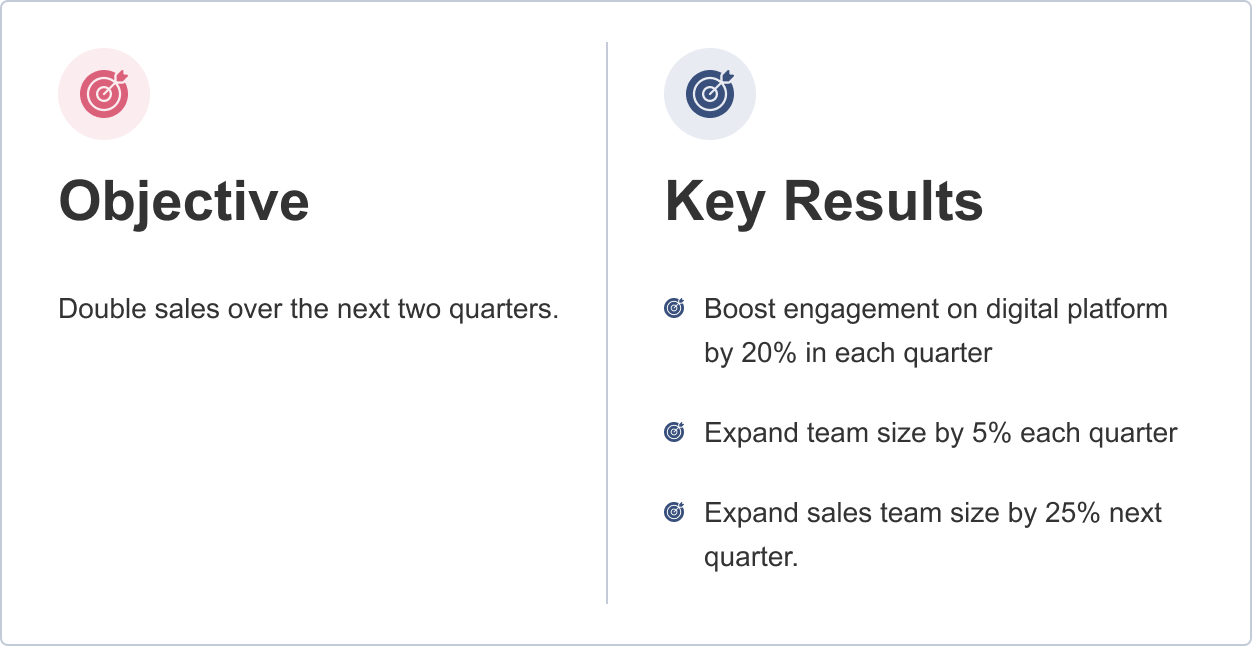Objectives in the Scaled Agile Framework (SAFe) play a critical role in aligning the efforts and focus toward achieving the goals set by the organization with their primary benefit being; becoming the basis for tracking the progress of the Program Increment in SAFe. Tracking of the objectives becomes easier with Objective Key Results (OKR) which is becoming a popular goal management framework. In this article, we will talk about what OKRs are, their rising use in the Scaled Agile Framework, and how they can be tracked. There is also a free template for writing OKRs that can be downloaded at the end of the article.
What is OKR
OKR is an abbreviation for Objectives and Key Results. It is a simple management technique that helps define goals and allows you to track them by seeing how much has been achieved. An OKR consists of the main and final objective and the key results. The objective specifies what needs to be achieved on a high level, while the key results help measure what you want to achieve in part on the journey.
What is a Key Result and why is it Important
It is usually not difficult to create an objective rather the question arises of how to achieve that final objective. That is where Key Results help. Key results help break down the objective into smaller measurable and significant milestones that eventually contribute towards fulfilling the main goal. A key result should have a percentage allocated to it so that it makes it easier to measure and track the objective. When creating key results there are a few elements that need to be kept in mind which are listed below:
- Key results need to be very specific and to the point.
- Each key result should be written in a way that has a high impact and an effect. To ensure this, it is important to have a great deal of knowledge present for making the key result.
- It is essential to understand that key results can not be controlled but their outcome can be influenced towards achieving the objective.
Business Value and OKR
Business value is expressed as a number that is helpful in indicating and measuring tangible and intangible benefits that a business can provide. Regarding OKRs, for creating effective and clear objectives and key results, business value can be primarily beneficial in helping prioritize what needs to be done. It can also help fill in the gaps to quickly convey an understanding of complex aspects such as the reputation of an organization, product reliability, legal compliance, ROI, cycle time, reduction, work effort, and so on; all of which can be used when creating meaningful OKRs. The numbers for the business value can be used further to calculate the achievement of the objective or the key results all of which can be used for the benefit of effective tracking.

Owner of the OKR
An owner of an OKR can be a person that leads the efforts of fulfilling the OKR. It is not to be confused with the people, teams, or departments that are executing the work.
Timeframe of the OKR
Planning a timeframe for an OKR can be used for determining the expected time for delivering the OKR or it can also be used to know when the actual business value of the key results is to be measured which can be right after delivery or a period of time when the beneficiaries have utilized the functionality.
Example of an Objective and a Key Result
An objective usually has 3-5 key results. Achieving objectives does not have to be step by step but it is important to have smaller goals that help achieve the bigger objective. Examples of Key Results can be.

How OKR is used in SAFe and their Importance
OKRs are increasingly becoming popular in SAFe. Below you will find four aspects in which the OKRS are used in SAFe and why they are important.
Alignment
OKRs in SAFe are mostly used in aligning the Strategic themes made at the Portfolio Level with the Value Streams and the development of what needs to be done by the Agile Release Train at the Program Level. They help in keeping a high level of engagement and communicating high-level goals simply across different levels.
Tracking
Key results play a huge role in tracking the progress of the objective at each level, you can have an objective and using the key results be able to track the progress of the work being done.
Defining MVP
The objective defines what is expected to be made while the key results can be aspects that would eventually prove or disapprove of the objective.
Improving Processes
You can have improvement OKRs where the objective can be the area that needs to be improved while the key results can consist of measurable steps that fulfill the objective.
How to Track OKR
For an OKR to be effectively tracked, it needs to be transparently written, regularly reviewed, and have owners that take the initiative of driving away any adversity or obstructions in reaching that defined goal and having properly designed mini-steps that may be owned by others.
Tracking is an almighty task, especially with a well-crafted breakdown of development or project-related tasks that feed the teams’ day-to-day work. Excel sheets and slides are usually the weapon of choice for tracking OKRs. It is very important to have something in place that is not static when it comes to tracking OKRs.
Going through the process of creating key results is a great way of obtaining clarity into what needs to be achieved even if you are unable to achieve the objective. Similarly, visibility and transparency are crucial when it comes to executing and creating complex products. Especially when it comes to planning and conveying business initiatives, such as the Strategic themes at the Portfolio Level in SAFe, OKRs reduce this complexity so that it becomes simple to track and measure high-level business priorities whilst making it transparent for all the involved stakeholders.
Takeaways
Objectives enhance transparency and prioritization of what needs to be achieved. For an OKR to be effectively tracked, it needs to be regularly reviewed and have owners and the proper key results assigned. OKRs are only successful if they are applied in an environment where development is done incrementally and iteratively. Only then can they be used to provide alignment, transparency, and the ability to track across various levels of an organization. Still not sure how to create OKRs? No need to worry. Click here to download the free guide for writing a clear and effective OKR.
OKR in Kendis
Kendis introduces a unique and exclusive way to create and track OKRs where you can track objectives, by key results, features or user stories, and business value. Below you will find how Kendis helps in creating and tracking OKRs.
Creating OKR
To create an OKR you can set the:
- Target date to complete the objective
- Responsible individuals for completing the objective
- Give a short description
- Set watchers for an objective who are not directly responsible for completing the objective but are concerned with the progress of the objective.
Tracking OKR
Kendis focuses on effectively tracking the OKRs by allowing you to link:
- Other created objectives
- Key results to features and user stories on the board
- Features and user stories with the key results
For all the created objectives, each of them will show the name of the:
- Board from where the feature of the user story is linked with the objective
- Team to which the objective is assigned to
- Creator of the objective
- Progress of indicating how much the objective has been achieved where each progress bar shows the percentage of how much a key result has been achieved
- The status of the objective
Kendis also allows you to batch your objectives/OKRs according to their departments. For example, you can have objectives for marketing, HR, sales, or product development. To download your free OKR template click here.
Want to learn more about tracking OKRs in Kendis? Click here









